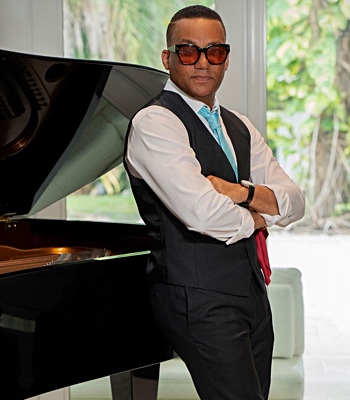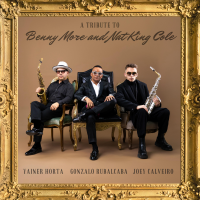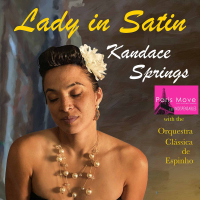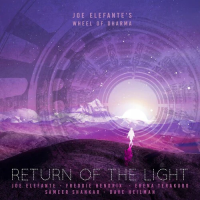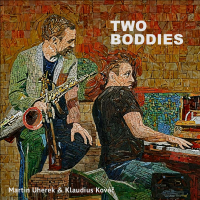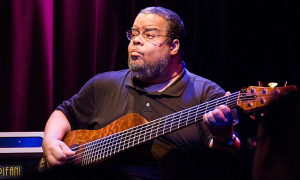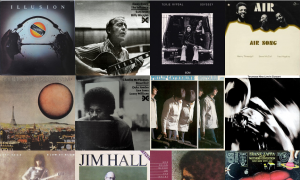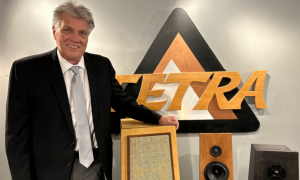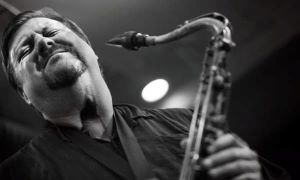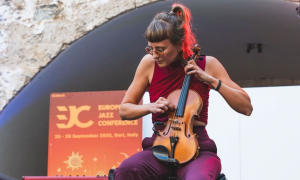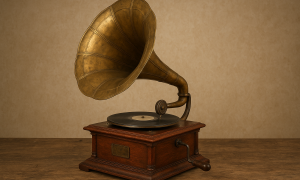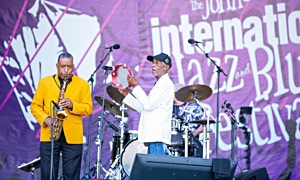Home » Jazz Articles » From Far and Wide » The Word is Beat: Jazz, Poetry & the Beat Generation
The Word is Beat: Jazz, Poetry & the Beat Generation

Who belongs to the Beat Generation?
The Beat Generation is a term that can be used to describe the generation of young people who grew up in the fifties, but it is important to emphasize that it was a subculture which grew slowly and gradually became more and more influential. Not every young person could identify with it and it was essentially a literary movement.
By now, the term the Beat Generation often covers a large group of writers, so it might be useful to divide the many writers into different categories. Firstly, there are the muses, Neal Cassady and Herbert Huncke. Through their life style and way of talking, they influenced the style and philosophy of the Beat Generation.
Secondly, there are what you might call the kings of the Beats. As the poet Michael McClure, who has also been associated with the Beat Generation, points out: "Originally, I think the Beat Generation was a specific, very small group of people. Originally, the Beats were (Jack) Kerouac, (Allen) Ginsberg, (William S.) Burroughs, and maybe (Gregory) Corso, and that's the core of the Beat phenomenon." (Lauridsen & Dalgaard: 115: 1990).
Thirdly, there are the Six Gallery poets. They include Allen Ginsberg, Kenneth Rexroth, Philip Lamantia, Michael McClure, Gary Snyder and Philip Whalen. They are called so because they read their poetry at a now historic reading in the Six Gallery in San Francisco on Friday, October 7, 1955. This was the first time Allen Ginsberg read his famous poem "Howl." Because of this poem, he was later tried in court, accused of obscenity.
Fourthly, there is large group of writers more or less associated with the Beat Generation. Some of them belong to other groupings like the Black Mountain School, the New York School and the San Francisco Renaissance. They include writers like Paul Bowles, Kenneth Patchen, Charles Olson, Robert Creeley, Bob Kaufman, John Clellon Holmes, Carl Solomon, Peter Orlovsky, John Weiners, Frank O'Hara, Lew Welch, Amiri Baraka, Ray Bremser, Ed Sanders and Lawrence Ferlinghetti. Especially Ferlinghetti has played an important role in Beat history through his work as a publisher. His City Lights imprint has released a large number of Beat books, including Howl and Other Poems (1956).
Fifthly, there is a group of female Beat writers, the queens of the Beat Generation. They are relatively few, but include Diane di Prima, Brenda Frazer, Hettie Jones, Joan Kerouac, Joyce Johnson and Carolyn Cassady.
Finally, there are the heirs of the Beat Generation whose writing shows a strong influence from the movement. They include musicians like Tom Waits and Bob Dylan, the photographer Robert Frank, the painter Larry Rivers and authors like Charles Bukowski and Hunter S. Thompson.
The Meaning of Beat
The word "beat" is just as complex as the Beat Generation and it covers many different meanings. According to Allen Ginsberg, the word was coined in 1948 in a conversation between John Clellon Holmes and Jack Kerouac. They were talking about generations, including Ernest Hemingway's Lost Generation in the 1920s, and attempted to describe their own generation. Kerouac ended up saying that: "Ah, this is nothing but a beat generation." Holmes picked up on the phrase and used it in his influential article "This Is the Beat Generation" (1952), which introduced the word to a wide audience.
However, the word was already in circulation among Beat-personalities like Herbert Huncke who used it to describe a certain state of mind, meaning tired, without money or a place to stay, like "do you have any money? No, I'm beat." The word was related to the outsiders in society, those having a hard time getting by, but at the same time, they were kind of streetwise people. In Beat circles, the word also had a more optimistic ring to it, something Kerouac pointed out when he connected beat with "beatific" and "beatitude," meaning a state of utmost happiness and bliss. The double-meaning of the word accurately describes the complex state of being beat, which means that, at the same time, you can be nakedly sensitive, rejected from society, full of existential despair, and still be wildly enthusiastic about the world, trying to see and describe it in all its diversity, spirituality and poetic beauty.
Of course, the mass media did not get the nuances in the word. Instead, it was often twisted in a negative direction where being beat was seen as something negative, with the beatnik being portrayed stereotypically as an unintelligent loser who spoke in a funny language that was ridiculed, an unemployed artist-type pothead with a goatee and a beret and without a sense of direction in life.
The Beat Muses: Huncke & Cassady
The Beat way of life was far more complex than the reduced media image. Two of the pioneers of Beat living, and a profound inspiration to Kerouac, Ginsberg and Burroughs, were Herbert Huncke and Neal Cassady. They were both storytellers, who also wrote and were published, but they were not actual authors as such. Instead, their writing came as a byproduct of their intense living. It is not a coincidence that both of them wrote biographies, although Cassady never finished his. His book The First Third (1971), as the title implies, only told about the first third of his life, and one could be tempted to say that he was too busy living to write his own biography. Huncke also wrote about his life in a book with the revealing title Guilty of Everything (1990), but these works were not as influential as Cassady's epic letters from his many journeys and Huncke's raw stories, scribbled down on the toilet.
Huncke and Cassady had the thing in common that they were influenced by oral language. Their writing was uncensored, mixing high and low style, literary and colloquial language that included slang and swearwords. This authentic, uncensored, flowing language became an immense inspiration to Kerouac, Ginsberg and Burroughs, but they took different things from these writers since Huncke and Cassady talked in two different ways and portrayed two different worlds.
Huncke, a junkie and a hustler, was first and foremost a city-dweller. He was the hero of the streets, a genuine con man who lived and depicted life in the city. He was a cool talker whose reports from the underworld influenced the nightmarish and surreal junkie-tales of William S. Burroughs.
Cassady, on the other hand, was the fast and smooth talker, "the Adonis of Denver" as Allen Ginsberg called him, with a voracious appetite for adventure and sex. He was the journeyman with a car as his home and the whole scenery of America as his setting. He became a role model for Kerouac, who portrayed him as Dean Moriarty in the quintessential Beat novel On the Road (1957), and who modelled his style of writing on Cassady's rambling letters.
Themes of the Beat Generation
The less than ordinary lives of Huncke and Cassady point in the direction of some of the most important themes of the Beat Generation: travelling and exploration (both the inner and outer journey), spirituality, sexual liberation (including gay liberation), drugs, freedom and revolt against capitalism, the literary establishment and middle class values. The literature of the beat generation takes the perspective of the outsider and the discriminated, whether it is the drug addicts, the insane, the poor, the homosexuals, the artists or the Afro-Americans. In spite of this progressive approach, the movement was quite patriarchal when it came to women, who were often abandoned and seen as sexual objects. The Beat Generation was predominately a male movement, even though writers like Diana DiPrima, Joyce Johnson and Carolyn Cassady provided a welcome female perspective.
Jazz and the Style of the Beat Generation
Overall, the goal of the Beat Generation was to portray life in all its shapes and sizes and write in a true and honest way. That also meant bringing words closer to music, with the howl of the human soul resembling the deep blowing of a saxophone. Another meaning of beat is like a beat in music or a drumbeat. Especially Jack Kerouac was influenced by jazz music and his prose is ripe with rhythmical patterns. Sometimes, he even writes like a saxophonist, with long flowing sentences like an endless saxophone solo or short sentences like razor-sharp little riffs. Kerouac called his style of writing spontaneous prose and there is a clear analogy between his stream of thoughts and the act of improvisation.
In terms of style, bebop was the music of choice and On the Road includes a reference to the iconic saxophone duel between saxophonists Dexter Gordon and Wardell Gray on "The Hunt." It was also an era where the combination of jazz and poetry reading was pioneered. Kerouac recorded with the saxophonists Al Cohn and Zoot Sims and Kenneth Patchen played with the Chamber Jazz Sextet. Music was also in the syntax. Allen Ginsberg talked about the influence of saxophonists Lester Young and Charlie Parker on "Howl" while Ray Bremser and Bob Kaufman wrote jazz poems. Leroi Jones (later Amiri Baraka) was not only influenced by jazz, he was also a jazz critic, and John Clellon Holmes created one of the finest jazz novels ever written with his portrait of the fictive saxophonist Edgar Pool in The Horn (1958).
Epilog: A Poetic View on the World
Jazz is the music of the moment that is best able to combine energy and sadness in a primal cry. That is why it is so eminently suited to the Beat Generation. Another expression of the Beat Generation's occupation with the presence of the moment is the fascination with Eastern Philosophy, especially Buddhism. The idea of Zen and presence in the moment is central in the philosophy of the Beat Generation and perhaps best expressed poetically in the form of a haiku. Here, Kerouac writes, "What is Buddhism? / -A crazy little / Bird blub." The bird could be an ordinary bird in nature, but it might as well be the saxophonist Charlie "Bird" Parker playing a "blub" on his saxophone, piercing through the silence with the beauty of his horn.
Taking the perspective of the outsider, the Beat Generation found beauty in the most unusual places without ignoring the pain and worrisome aspects of existence. The writers are very different when it comes to style, but one thing they have in common: whether it is Burroughs cutting up previous texts and putting them together in a new way, Kerouac writing in a stream of consciousness, or Ginsberg using repetition to makes his poem a cosmic chant, it is all about breaking up the familiar habits of seeing. Instead, the purpose is to provide a new and poetic view on the world.
Literature:
Charters, Ann: The Portable Beat Reader, Penguin Classics, 2003
Janssen, Mike: "Jazz and the Beat Generation": http://www.litkicks.com/Topics/Jazz.html
Lauridsen, Inger Thorup & Per Dalgaard: The Beat Generation and the Russian New Wave, Ardis, 1990
Morgan, Bill: The Typewriter is Holy. The Complete Uncensored History of the Beat Generation, Free Press, 2010
Phipps-Kettlewell, Marilène (editor) Jack Kerouac: Collected Poems, Library of America, 2012
Waldman, Anne (editor): The Beat Book. Writings from the Beat Generation, Shambhala Publications, 1996
Music/Sound Recordings:
Various Artists: The Beat Generation, Rhino Records, 1992
Various Artists; Howls, Raps & Roars: Recordings from the San Francisco Poetry Renaissance, Fantasy, 1993
Various Artists: Beat Generation Boxed, Enlightenment, 2014
Tags
General Articles
Jakob Baekgaard
United States
san francisco
Paris
Tom Waits
Bob Dylan
Dexter Gordon
Wardell Gray
Al Cohn
Zoot Sims
Lester Young
Charlie Parker
PREVIOUS / NEXT
Support All About Jazz
 All About Jazz has been a pillar of jazz since 1995, championing it as an art form and, more importantly, supporting the musicians who make it. Our enduring commitment has made "AAJ" one of the most culturally important websites of its kind, read by hundreds of thousands of fans, musicians and industry figures every month.
All About Jazz has been a pillar of jazz since 1995, championing it as an art form and, more importantly, supporting the musicians who make it. Our enduring commitment has made "AAJ" one of the most culturally important websites of its kind, read by hundreds of thousands of fans, musicians and industry figures every month.



